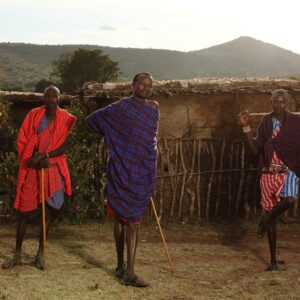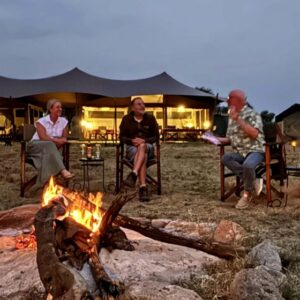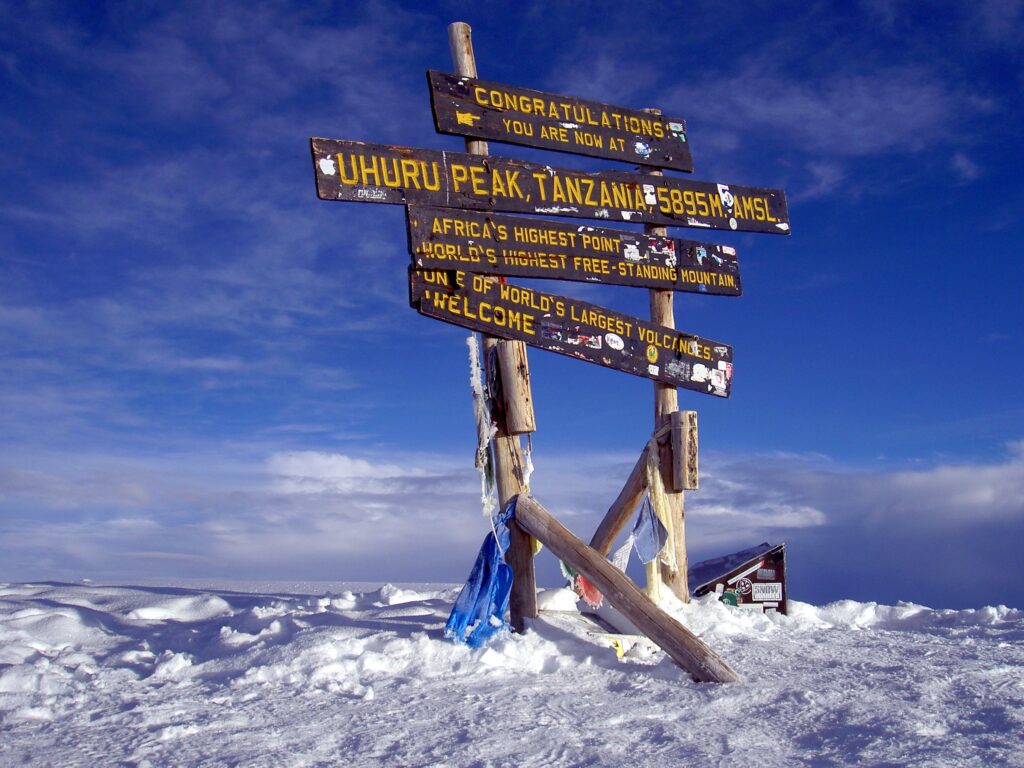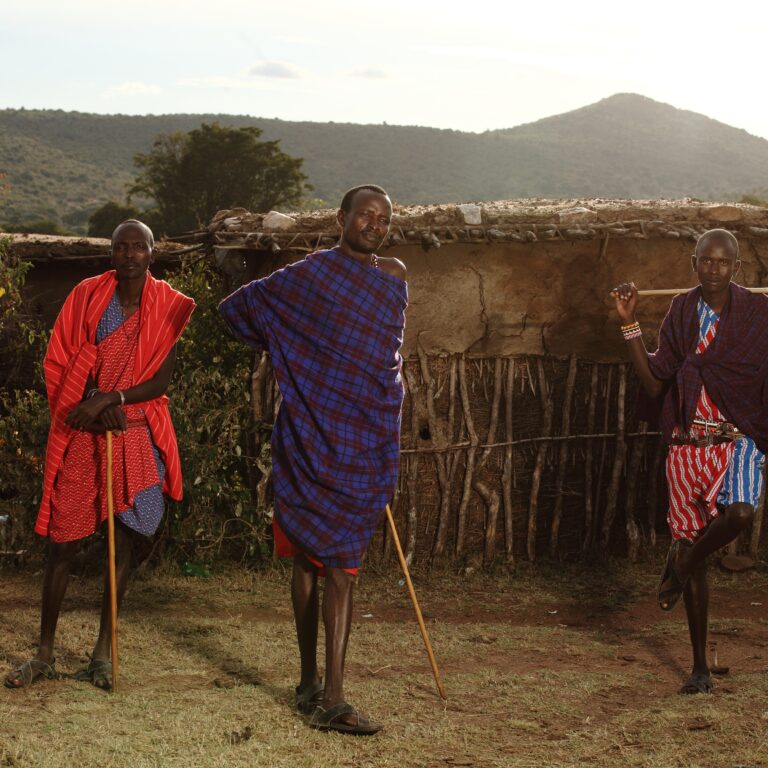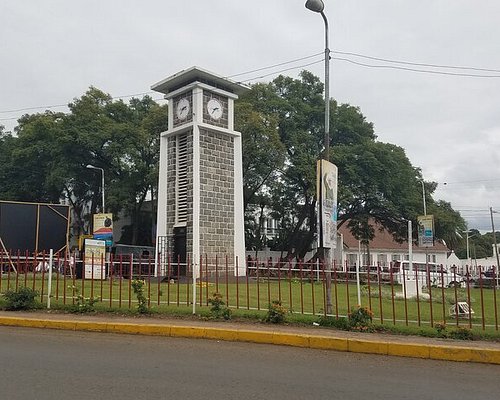To plan a wildebeest migration safari, choose the time of year that offers the best sightings, such as July-October for river crossings or February for calving, and book accommodations and safari packages at least a year in advance, especially for peak times. Work with a reputable safari operator, consider booking a mobile camp that follows the herds, and decide on your preferred style of accommodation, like private conservancies for a more exclusive experience.
The Wildebeest Migration—often called the Great Migration—is one of the most remarkable natural events on Earth. Each year, over 1.5 million wildebeest, accompanied by hundreds of thousands of zebras and gazelles, journey across the Serengeti-Mara ecosystem, navigating predators, rivers, and endless grasslands. To witness this breathtaking spectacle, proper planning and booking are essential. Here is an expert, step-by-step guide on how to plan and book the perfect Wildebeest Migration safari.
Decide on the Best Time to Go for the Wildebeest Migration
Timing is critical when planning a wildebeest migration safari. The migration typically occurs between July and October, when thousands of wildebeest move from the Serengeti in Tanzania to the Maasai Mara National Reserve in Kenya. These months are the peak viewing times. It can also be beneficial to visit during the calving season (January to March) for a chance to witness newborn wildebeests and the predators that follow. Assess your schedule and determine which time frame aligns with your wildlife viewing preferences. Timing is everything when it comes to the Great Wildebeest Migration. The herds move in a circular route through Tanzania and Kenya. Each stage of the journey offers a unique wildlife experience.
• January to March: Calving season in the Southern Serengeti. Thousands of calves are born daily, attracting big cats like lions, cheetahs, and hyenas.
• April to May: The long rains begin. The herds start migrating north. This is the green season—less crowded, but some areas may be inaccessible.
• June to July: The animals gather in the Western Corridor. They face the first of the river crossings at the Grumeti River.
• August to October: Peak of the migration in the Northern Serengeti and Maasai Mara. This is the prime time to witness dramatic Mara River crossings, with crocodiles and big cats in action.
• November to December: The herds begin their return south through the Eastern Serengeti. With scattered herds and excellent predator sightings.
Choose your travel dates based on the specific event or location you wish to experience. Calving, river crossings, or the massive herd movements.
Set and Decide on Your Budget
Setting a budget is essential for any safari experience. Analyze your financial situation and determine how much you are willing to spend on the trip. Keep in mind that safari costs can vary widely. Influenced by factors such as accommodation, transportation, park entry fees, and additional activities. Establishing a budget will help you narrow down your options and ensure you can enjoy your trip without financial stress. Your budget determines the length, style, and luxury level of your safari. Pricing varies depending on the time of year, level of accommodation, and how remote your safari will be.
Budget Safaris ($200–$400 per person/day): Group tours, basic tents or lodges, overland travel.
Mid-Range Safaris ($400–$800 per person/day): Comfortable lodges or permanent tented camps, custom or semi-private safaris.
Luxury Safaris ($800–$2500+ per person/day): Exclusive camps, fly-in access, private guides, gourmet cuisine, and top-tier amenities.
Factor in:
• Internal flights
• Park fees
• Tips and gratuities
• Travel insurance
• Optional activities (e.g., hot air balloon rides)
Define your budget early to narrow down your options and focus your research.
Choose Your Safari Style
Safari experiences can vary significantly based on style. Consider whether you prefer a luxury lodge, a mid-range tent, or a camping adventure. Luxury lodges offer plush amenities and gourmet meals, while mid-range options may provide a balance of comfort and cost. Camping safaris, while more basic, immerse you in nature and can be budget-friendly. Additionally, think about whether you want to join a group tour or have a private guide. Each style has its unique appeal, so choose what resonates with you. There are several ways to experience the Wildebeest Migration, depending on your preferences and budget.
Mobile Tented Safaris: Mobile camps follow the migration routes and offer a more intimate, raw connection to nature. Expect fully equipped canvas tents, bucket showers, and eco-friendly setups.
Permanent Lodges and Tented Camps: These offer solid infrastructure, ensuite bathrooms, solar power, and gourmet dining. They’re often situated in strategic migration locations.
Fly-in Safaris: Ideal for those who want to skip long drives. Small aircraft deliver you straight to the heart of the migration zones. Offers comfort, speed, and bird’s-eye views of the landscape.
Private Guided Safaris: Perfect for families or small groups. Tailored itineraries, personal guides, and flexible scheduling make this a highly customizable option.
Choose a style that suits your travel comfort level, mobility, and desired level of immersion.
Research Safari Operators Thoroughly
Once you have your budget and safari style figured out, it’s time to research safari operators. Seek out reputable companies with positive reviews and experienced guides. If possible, ask for recommendations from friends or family who have been on a similar trip. Look into their itineraries, cancellation policies, and customer support to ensure you select an operator that meets your expectations. Don’t hesitate to reach out directly with questions or concerns. Choosing the right operator is crucial to your overall experience. Look for:
• Accreditation: Ensure the company is a member of KATO (Kenya) or TATO (Tanzania).
• Reviews & Testimonials: Use platforms like TripAdvisor. Google to assess customer satisfaction.
Specialization: Prioritize operators with experience in migration-focused safaris.
Guide Quality: Expert, English-speaking guides with tracking skills significantly enhance the experience.
Transparency: Insist on clear, itemized pricing and inclusions.
Shortlist 2–3 reputable companies, compare packages, and ask detailed questions before committing.
Plan the Itinerary Strategically
A well-planned itinerary can enhance your safari experience. Consider how many days you want to spend in the Serengeti and Maasai Mara. As well as any additional locations you may want to explore. Ensure that your daily schedule allows for ample game drives. As well as time for other activities like cultural village visits or hot air balloon rides. Flexibility is key—wildlife sightings can be unpredictable, and having a loose itinerary allows you to adapt as needed. A well-structured itinerary maximizes your chances of witnessing migration highlights. Recommended 7-Day Itinerary:
Day 1: Arrive in Nairobi or Arusha. Overnight in a city hotel.
Day 2: Fly to Central or Northern Serengeti / Maasai Mara. Game drive.
On Days 3–5: Full-day game drives in migration zones.
Travel Day 6: Optional cultural visit to a Maasai village or hot air balloon safari.
Day 7: Return flight and connect to the international departure.
Add extensions to:
• Ngorongoro Crater (Tanzania)
• Lake Nakuru or Amboseli National Park (Kenya)
Use real-time migration maps (available via select tour operators). Determine the exact herd location during your travel dates.
Tips: Complete Guide to a Wildebeest Migration Safari. A wildebeest migration safari offers a chance to see millions of wildebeest in Tanzania’s Serengeti and Kenya’s Maasai Mara. The best time to visit depends on the migration phase: the calving season is December-March in the Southern Serengeti. Journey north is April-June, river crossings occur July-October, and herds return south in November. Plan at least 6-12 months, especially for peak times like river crossings, and consider mobile camps. Experienced guides to track the unpredictable herds.
Book Your Safari Early and Securely
Once you are satisfied with your research and planning, it’s time to book your safari. Most operators allow you to reserve your trip online or over the phone. Be prepared to pay a deposit to secure your booking, and be sure to confirm the details in writing. A comprehensive confirmation should include accommodations, safari activities, transportation, and any other services included in your package. Don’t forget to explore travel insurance options for extra peace of mind. Wildebeest Migration safaris are in high demand, particularly from July to October. To avoid disappointment:
• Book 6–12 months in advance, especially for luxury and peak-season trips.
• Request a written contract or service agreement.
• Clarify deposit policies and refund terms.
• Ensure travel insurance covers cancellations, medical evacuation, and trip interruption.
Confirm that your booking includes:
• All transfers and flights
• Park and conservation fees
• Accommodation and meals
• Game drives with certified guides
Prepare for Your Trip Efficiently
Preparation is crucial for ensuring a successful safari. Start by gathering essential items such as binoculars, a quality camera, comfortable clothing in neutral colors, and a sturdy pair of shoes. Check health requirements and consider any necessary vaccinations or medications, especially if you’re traveling to regions with malaria. Additionally, familiarize yourself with the local customs and etiquette to ensure respectful interactions with locals and wildlife. Once your booking is secured, it’s time to get ready.
Health and Vaccinations
• Yellow Fever vaccination (required for most East African countries)
• Malaria prophylaxis
• Hepatitis A, Typhoid, Tetanus shots (recommended)
Travel Documents
• Passport (valid for 6 months minimum)
• Tourist visa (available online for Kenya and Tanzania)
• Travel insurance certificate
• Safari itinerary printouts
Packing List
• Neutral-colored clothing (avoid white, black, blue)
• Lightweight fleece/jacket for cool mornings
• Comfortable walking shoes
• Sunscreen, hat, and insect repellent
• Binoculars and a DSLR or mirrorless camera
• Extra memory cards and battery packs
• Power bank and universal adapter
Tips: the Ultimate Guide to the Great Wildebeest Migration Packing list. For the Great Wildebeest Migration, pack neutral-colored, lightweight, long-sleeved shirts and pants, a warm fleece or jacket, closed-toe shoes, a hat, sunglasses, and insect repellent. Essential extras include binoculars, a camera, a power bank, and a headlamp for navigation. Also, remember a daypack for essentials, a reusable water bottle, and sunscreen to protect against the sun and insects. Pack light but smart. Many bush flights have a 15 kg luggage limit, including hand luggage.
Choose Your Destination Wisely: Serengeti or Maasai Mara
While the wildebeest migration primarily occurs between the Serengeti and the Maasai Mara, consider adding other destinations to your itinerary for a well-rounded experience. Tanzania offers gems like Ngorongoro Crater and Lake Manyara, while Kenya boasts Amboseli National Park with views of Mount Kilimanjaro. Expanding your journey can enhance your overall wildlife experience and create lasting memories. By following these steps to plan and book your wildebeest migration safari, you’ll be well on your way to experiencing one of nature’s most breathtaking phenomena. With the right preparation, your adventure will undoubtedly be a memorable one, filled with remarkable wildlife encounters and stunning landscapes. Happy travels! Both the Serengeti in Tanzania and the Maasai Mara in Kenya offer phenomenal migration viewing. Each has its strengths:
Serengeti National Park (Tanzania)
• Vast, remote, and less crowded
• Best for longer safaris
• Covers all migration stages
• Offers calving season in Ndutu (Jan–March)
Maasai Mara National Reserve (Kenya)
• Compact and predator-rich
• Ideal for short safaris
• Peak river crossings from August to October
• Easier access from Nairobi
For first-time safari-goers or short trips, the Maasai Mara is ideal. For more immersive experiences, Serengeti’s scale and diversity are unmatched.
Tip: Wildebeest migration covers a staggering annual distance, with the entire herd traversing approximately 1,800 to 2,000 miles (2,900 to 3,200 kilometers) in a large area. Clockwise circuit through the Serengeti in Tanzania and Kenya’s Masai Mara. While the overall herd journey is immense. Individual animals may travel less, and the exact route is a continuous, year-long cycle following seasonal rains in search of fresh grazing land and water.
The Ultimate Wildebeest Migration Safari
An “Ultimate Wildebeest Migration Safari” involves tracking the annual migration of millions of wildebeest and zebras across Tanzania’s Serengeti and Kenya’s Masai Mara. Focusing on key events like the calving season in the Southern Serengeti (late January to March) and dramatic river crossings in the North (August and September). The best way to experience this phenomenon is through a private, luxury safari that includes expertly guided game drives. Stays in strategically located luxury lodges and tented camps, and often incorporates other Tanzanian destinations like Tarangire and the Ngorongoro Crater.
How Many Days Do I Need for a Wildebeest Migration Safari?
You generally need a safari of 5 to 12 days for a Wildebeest Migration experience, as the duration depends on the desired depth of your safari and whether you want to focus on a specific part of the migration, like the river crossings. A shorter 3-5 day trip is a great introduction, while a 7-12 day trip allows for a more comprehensive exploration of the Serengeti and other areas, increasing your chances of witnessing dramatic events like crossings.
An Ultimate Guide to a Wildebeest Migration Safari involves booking 6-12 months in advance. Understanding the migration’s cyclical nature to choose a season (calving in the South Serengeti, river crossings in the North). Packing essential gear like a zoom lens and binoculars. Travel with experienced guides, as the timing of the migration is unpredictable and depends on rainfall. But they will help you find the herds during your chosen month, one of the amazing complete guides to wildebeest migration safari.
Planning a Great Wildebeest Migration safari in Africa
To plan a great wildebeest migration safari, book at least a year in advance, decide which migration phase you want to see (calving season in the south or river crossings in the north), choose between Tanzania’s Serengeti and Kenya’s Maasai Mara, and consider private conservancies for exclusivity. Top tips for planning a lifetime African Great Migration Safari. Pack neutral, layered clothing, bring binoculars, and prioritize mobile camps or lodges near key crossing points to maximize your chances of witnessing this incredible natural event.
Wildebeest Migration Facts
The Wildebeest Migration is the world’s largest land mammal migration, covering over 800 km (500 miles) in a year-round, circular route through the Serengeti National Park (Tanzania) and Maasai Mara National Reserve (Kenya). Driven by seasonal rains and the pursuit of nutritious grass, the migration involves up to 2.5 million wildebeest, zebra, and other antelopes, with calves being born in February and March on the Southern Plains before the herds move north. The journey features dramatic river crossings, primarily the Mara River, and is a continuous cycle of grazing, calving, and predator encounters, with some 250,000 animals dying during the perilous journey each year.
Essential Tips for Planning Your Perfect Wildebeest Migration Safari
To plan a perfect wildebeest migration safari, book at least a year in advance to secure lodges and camps. Choose a region and time of year that matches the wildebeest’s location. Stay multiple days for the best chances of seeing events like river crossings, and pack appropriate gear like binoculars and neutral-colored clothing. Using a trusted guide will enhance your experience by providing expert knowledge on wildlife movements and behavior.
Best Times to Experience the Great Wildebeest Migration
The best time for the Great Wildebeest Migration depends on what you want to see. Visit the Northern Serengeti (July-October) for the dramatic Mara River crossings. Southern Serengeti (December-March) to witness the calving season and newborn calves, which draw predators. The dry season (June-October) generally offers the best game viewing, but the calving season is a unique and highly sought-after highlight.
Serengeti wildebeest migration explained with a moving map.
The Great Wildebeest Migration is a perpetual, circular journey following rainfall and fresh grazing across the Serengeti-Mara ecosystem. The herds in the south of the Serengeti move from December to March for calving. Moving north and west through April-June, crossing rivers like the Mara in the north (July-September).Before returning south to the Serengeti’s short-grass plains by November. To visualize this, watch animated maps that show the herds’ movement through Tanzania and Kenya, as the precise location changes throughout the year. Wildebeest Sightings is Africa’s leading Great Migration tracker, with almost accurate information on the latest updates of the Great Migration in Tanzania.
Things to Know Before Booking a Great Wildebeest Migration Safari
To plan a great wildebeest migration safari, book at least a year in advance. Especially for peak river crossing seasons (June-October). Choose your timing and location carefully to witness specific events like river crossings or the calving season. You’ll need a knowledgeable tour operator to navigate the unpredictable movements of the herds and a flexible itinerary to accommodate their unpredictable wildebeest migration safari packages patterns. Finally, pack for varied conditions, including warm layers for cool mornings and evenings, and be prepared for long days on the road to find the animals.
Great Wildebeest Migration – Where, when, and more tips!
The Great Wildebeest Migration occurs in Tanzania’s Serengeti and Kenya’s Masai Mara. The best viewing times depend on the specific event. December to March is best for the calving season in Southern Serengeti/Ndutu, May to June for early Grumeti River crossings in Western Serengeti, and July to October for the dramatic Mara River crossings in Northern Serengeti and Masai Mara. To improve your chances of seeing the migration. Stay at a mobile safari camp to follow the herds or take a fly-in safari to efficiently move between different locations. You can watch this video to learn more about the wildebeest migration in the Serengeti National Park.
Serengeti wildebeest migration explained with a moving map.
The Great Serengeti Wildebeest Migration is a continuous, year-round movement of over two million wildebeest, zebras, and gazelles across the Serengeti-Mara ecosystem. Primarily following rainfall to find nutritious grass and water. The herds congregate for calving in the southern Serengeti (Tanzania) from December to March, then move west in April-May, cross rivers like the Grumeti and Mara (facing crocodiles) in the north during July-September, and eventually head south by November to return to the short-grass plains for calving, completing the cycle.
First Timer’s Guide: Step-by-Step to Planning your Tanzania Safari
Tips for Planning an African Great Migration Safari
Tips for Planning Your Wildebeest Migration Safari
A Guide to Your First African Safari
Why do we only offer private safaris
Conclusion
Planning a Wildebeest Migration safari is about more than just choosing dates. It involves aligning your goals with the right time, right place, right operator, and right budget. When done right, it offers front-row seats to one of nature’s most powerful and emotional performances. Millions of hooves thundering across the savannah, life and death playing out in real-time.


